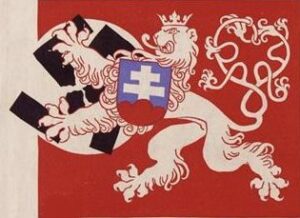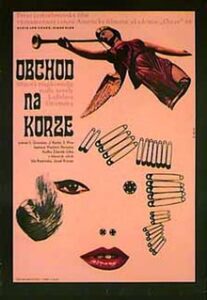WW2 MUSEUM PRAGUE
WORLD WAR II SITES & MOVIES

WWII MUSEUM PRAGUE WITH THE OPERATION ANTHROPOID CRYPT – (this museum is included in our tour)
WW2 Museum Prague – A Living Tribute to our Military History
Resilience & Anthropoid
Operation Anthropoid – A Remarkable Chapter in Prague’s History
A Glimpse into Prague’s Rich History
The Three Kings – Heroes of Prague
Honoring Sacrifice – A Piece of Prague’s History
Operating Hours of WW2 museum Prague in Ressslova street

Army Museum Žižkov – Military Historical Institute
Nestled in the heart of Prague, the Army Museum Zizkov stands as a repository of historical significance, offering a poignant window into the past through its immersive World War II exhibition. This museum’s dedication to preserving and sharing this chapter of history makes it an invaluable resource for those interested in the military history of the Czech Republic.
Operating Hours
Hitler’s Madman is a 1943 World War II drama directed by Douglas Sirk. It is a highly fictionalized account of the 1942 assassination of Nazi official Reinhard Heydrich and the resulting Lidice massacre, which the Germans committed as revenge. The film stars Patricia Morison and Alan Curtis and features John Carradine as Reinhard Heydrich.
Hangmen Also Die! is a 1943 noir war film directed by the Austrian director Fritz Lang and written by John Wexley from a story by Bertolt Brecht (credited as Bert Brecht) and Lang. The film stars Hans Heinrich von Twardowski, Brian Donlevy, Walter Brennan, Alexander Granach and Anna Lee, and features Gene Lockhart and Dennis O’Keefe.
The Silent Village is a 1943 British propaganda short film in the form of a drama documentary, made by the Crown Film Unit and directed by Humphrey Jennings. The film was named one of the top 5 documentaries of 1943 by the National Board of Review.It was inspired by the Lidice massacre in Czech Republic in June 1942.
Atentát (English title: The Assassination) is a 1964 black-and-white Czechoslovak war film directed by Jiří Sequens. The World War II story depicts events before and after the assassination of top German leader Reinhard Heydrich in Prague (Operation Anthropoid). Czech historians have called the film the historically most accurate depiction of the events surrounding Operation Anthropoid.
Operation Daybreak (also known as The Price of Freedom in the U.S.and Seven Men at Daybreak during production) is a 1975 war film based on the true story of Operation Anthropoid, the assassination of SS general Reinhard Heydrich in Prague. Starring Anthony Andrews, Timothy Bottoms and Martin Shaw, the film was directed by Lewis Gilbert and shot mostly on location in Prague. It is adapted from the book Seven Men at Daybreak by Alan Burgess.
Anthropoid is a 2016 war film directed by Sean Ellis and starring Cillian Murphy, Jamie Dornan, Charlotte Le Bon, Anna Geislerová, Harry Lloyd, and Toby Jones. It was written by Ellis and Anthony Frewin. It tells the story of Operation Anthropoid, the World War II assassination of Reinhard Heydrich by exiled Czechoslovak soldiers Jozef Gabčík and Jan Kubiš on 27 May 1942
The Man with the Iron Heart (released as HHhH in France and Killing Heydrich in Canada) is a 2017 biographical action-thriller film directed by Cédric Jimenez and written by David Farr, Audrey Diwan, and Jimenez. An English-language French-Belgian production, it is based on French writer Laurent Binet’s 2010 novel HHhH, and focuses on Operation Anthropoid, the assassination of Nazi leader Reinhard Heydrich in Prague during World War II.
Lidice (also known as The Butcher of Prague and Fall of the Innocent in the UK) is a 2011 Czech drama film produced by Adam Dvořák from a screenplay by Zdenek Mahler. It was initially directed by Alice Nellis, but after she contracted Lyme disease (borreliosis), Petr Nikolaev took over. It tells a story involving the Nazi massacre at—and destruction of—the Czech village of Lidice.
The Shop on Main Street (Czech/Slovak: Obchod na korze; in the UK The Shop on the High Street) is a 1965 Czechoslovakian film about the Aryanization program during World War II in the Slovak State.The film was written by Ladislav Grosman and directed by Ján Kadár and Elmar Klos. The film won the 1965 Academy Award for Best Foreign Language Film, and Kamińska was nominated one year later for Best Actress in a Leading Role.It was entered into the 1965 Cannes Film Festival.
All My Loved Ones (Czech: Všichni moji blízcí) is a 1999 Czech-language film directed by Matej Mináč. It is the story of an upwardly-mobile Jewish-Czech family before Nazi invasion of Czechoslovakia. After initial denial about the looming danger, the family is unable to find a way out of the country upon realizing the reality of the imminent Nazi threat. An uncle in the family meets Nicholas Winton, the (real life) British humanitarian who, just before the start of the Second World War, organized the rescue of several hundred Jewish children from German-occupied Czechoslovakia and likely death in the Holocaust.











